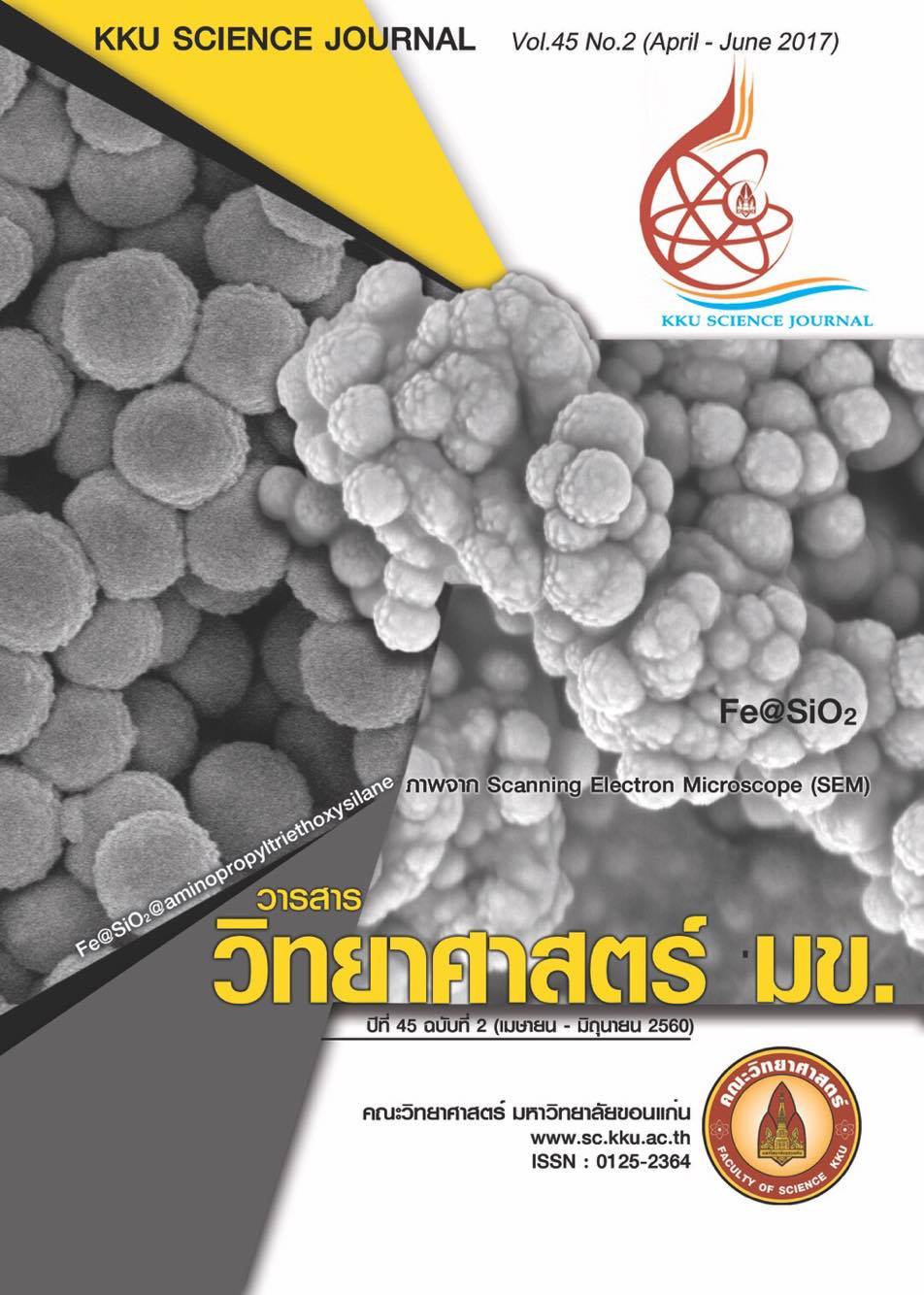Mangrove and its utilization: Case study on quality of smoked shrimps by mangrove wood in Takuapa district, Phang Nga province
Main Article Content
Abstract
The objectives of this study were to investigate the context of mangrove forest and basic data of smoked shrimp production in Takuapa district, Phang Nga province by the process of data collection and open ended interview. The qualities of smoked shrimps by smoke wood of Rhizophora apiculata, Bruguiera cylindrical and Xylocarpus granatum were analyzed and compared. The study showed that in Takuapa district, Phang Nga province, there were approximately 50,296 Rai of fertile mangrove forest area with many kinds of valuable mangrove species, mostly in Genus Rhizophoraceae, Sonneratiaceae and Vervenaceae. The villagers utilized mangrove wood to produce smoked shrimps. It was found that there were 18 entrepreneurs who carried on smoked - dried shrimp production. Smoked shrimps using three species of mangrove wood; Rhizophora apiculata, Bruguiera cylindrical and Xylocarpus granatum, were composed of 21.66-27.05% moisture, 63.30-67.02% protein, 1.37-1.47% carbohydrate and 1.50-1.86% lipid. The highest phenolic compound content (3.59 mg per gram) was recorded in smoked shrimps using Bruguiera cylindrica wood, while the contents of 3.01 and 3.37 mg per gram were found in Xylocarpus granatum and Rhizophora apiculata, respectively. For sensory evaluation, there were high scores of color (7.93 and 7.70) for smoked shrimps using wood from Bruguiera cylindrica and Xylocarpus granatum, respectively, significantly higher (P<0.05) than that from Rhizophora apiculata (4.80). Smoked shrimps by Xylocarpus granatum wood received the highest scores of 7.50, 7.23, 7.90 and 7.03 for smoke odor, texture, crispness and luster, respectively. In addition, the overall sensory acceptability of the smoked shrimps showed that smoked shrimp using Xylocarpus granatum wood had the high score between the like moderately to like very much level (7.80), significantly higher (P<0.05) than those smoked by Rhizophora apiculata (5.40) and Bruguiera cylindrica (6.97). After 3 months of storage, TBA values were obviously increased from 0.04-0.06 to 0.10-0.16 mg per kg. Total microorganisms were found between 1.5 x 105 and 8.0 x 105 colonies per gram; yeast and mold less than 100 colonies per gram. The values of water activity were prone to increase. The findings suggested that smoked shrimps by Xylocarpus granatum wood were the most acceptable product.
Article Details

This work is licensed under a Creative Commons Attribution-NonCommercial-NoDerivatives 4.0 International License.


